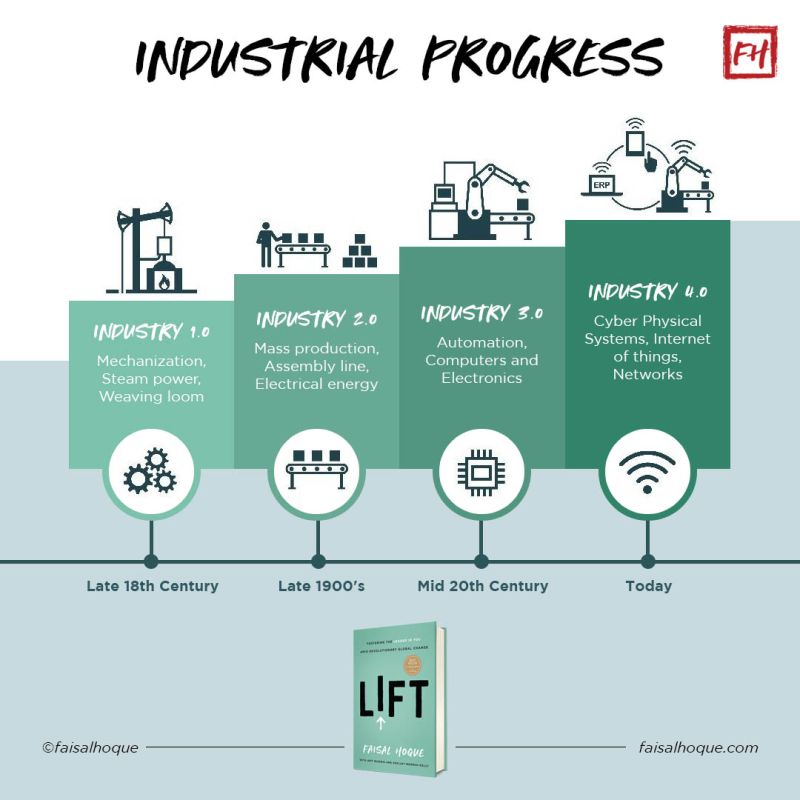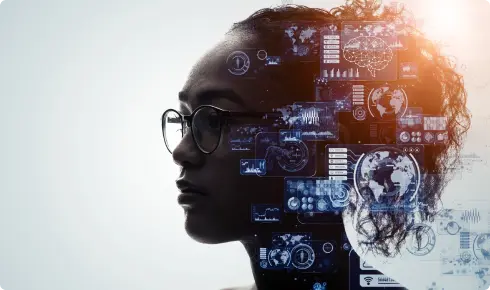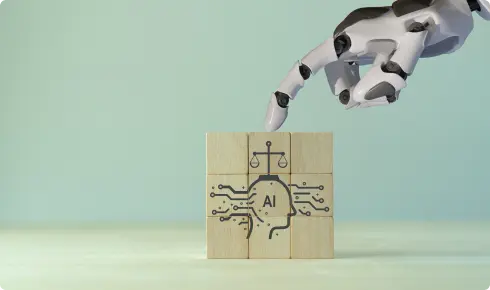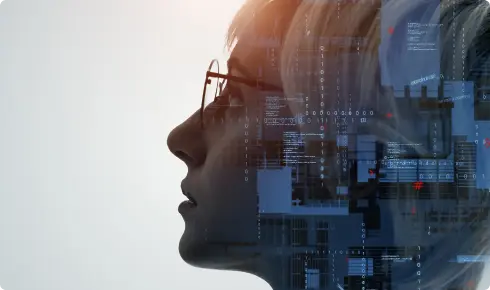Developed nations can expect to see job loss rates of up to 47 percent within the next 25 years. [Source: University of Oxford Study]
By Faisal Hoque
FIRST, WE’VE ENTERED THE FOURTH INDUSTRIAL REVOLUTION

For most business owners, the global pandemic thrust them into 4IR, better known as The Fourth Industrial Revolution.
Consider that the First Industrial Revolution introduced mechanized production. Innovations like the steam engine, the iron bridge, and saw mills overtook the manual agriculture industry by leveraging power generated through water and steam. Next came the Second which employed electric power to create mass production. Electricity supercharged advancement, making it easier to get around on trains, automobiles, and bicycles. At the same time, ideas and news spread faster via newspapers, the radio, and telegraph.
Then the Third, using electronics and information technology to automate production. Nuclear energy! This was a clearly defined period that opened the doors to space expeditions, research, and biotechnology through the new technologies. One, two, and three were periods that were obvious and clear.
As with its predecessors, the Fourth Industrial Revolution marks a continuation of the disruption that preceded it. But the blurry part of the Fourth Industrial Revolution is the blending of digital, biological, and physical innovations. The rise of artificial intelligence (AI), robotics, the Internet of Things (IoT), autonomous vehicles, 3D printing, nanotechnology, biotechnology, and quantum computing are all elements of this massive union of technology and accessibility. Not so clear anymore.
What CEOs, leaders, and investors need to understand about 4IR is the impact it will have not only on their employees but also their customers. And then adjust their business models accordingly – faster.
According to a 2017 University of Oxford study, developed nations can expect to see job loss rates of up to 47 percent within the next 25 years. Additionally, a Pew Research Center study found that “robotics and artificial intelligence will permeate wide segments of daily life by 2025, with huge implications for a range of industries such as healthcare, transport and logistics, customer service, and home maintenance.” Most of us are increasingly unprepared for this rapidly changing world of working.
And if you think your business is immune because you’ll be retired in 25 years, you’re missing the speed at which things are changing.
For instance, in mid-2021, Domino’s pizza chain debuted a pizza delivery robot car in the Houston area. The first completely autonomous, human-free, on-road delivery vehicle to receive regulatory approval from the United States Department of Transportation. Elsewhere, Chinese tech company Baidu introduced a driverless taxi service in 2021, making it the first in China. If you ask the competition these two events happened overnight.
THE GREAT RESIGNATION PROVES THERE’S NO BUSINESS AS NORMAL
The one-two punch of 4IR and the COVID-19 pandemic has also revolutionized the very structure of consumer activity. Sheer convenience coupled with lingering concern about virus transmission has led to the rise of contactless purchasing in stores and using QR codes or apps such as Apple Pay and Google Pay. Cards now use near-field communication for fast, convenient transactions without the need for any sort of physical contact. Digital wallets are gaining in popularity. China-based technology giant Alibaba has even developed a Smile-to-Pay functionality that incorporates facial recognition. Greater connection to information and resources has also resulted in a significant drop in traditional consumer loyalties. Recent research has found that 75 percent of American consumers are trying a new shopping behavior in response to economic pressures, store closings, and changing priorities.
WE’VE BECOME COMMITTED TO BEING HYBRID AND FLEXIBLE
Although growing use of freelancers will afford workers greater flexibility and opportunity to specifically craft their professional lives, companies and organizations looking for the stability of long employee tenures will have to adapt themselves as well to foster a similar level of loyalty and sense of connection among freelancers—a new challenge that will mandate different leadership, thinking, and action.
YOU MUST BECOME TEACHERS—OR ELSE
I knew at the very beginning of my career in the early ’90s that technology would have a serious impact on socioeconomic growth, individually and organizationally.
What I had to learn is that there is a dividing line where automation ends, and basic humanities (or so-called soft skills) have to step up to the plate. Even Tesla’s Elon Musk admits that over-automation has hampered creativity and productivity at his company, which is well known for its innovative, out-of-the-box thinking on the automobile-manufacturing front. In other words, where human interaction ends and full automation begins, ideas can die—maybe never to come back.
A recent Royal Bank of Canada research paper, “Humans Wanted—How Canadian Youth Can Thrive in the Age of Disruption,” found the following:
- Being “human” will ensure resiliency in an era of disruption and artificial intelligence.
- Skills mobility—the ability to move from one job to another— will become a new competitive advantage.
- The demand for “human skills” will grow across all job sectors and will include critical thinking, coordination, social perceptiveness, active listening, and complex problem-solving.
- Rather than a nation of coders, digital literacy—the ability to understand digital items, digital technologies, or the internet fluently—will be necessary for all new jobs.
- Global competencies such as cultural awareness, language, and adaptability will be in demand. Virtually all job openings will place significant importance on judgment and decision-making, and more than two-thirds will value an ability to manage people and resources.
LEADING THROUGH 4IR
It’s clear that the new technology that characterizes 4IR can optimize the way people work—provided it is implemented thoughtfully. However, tempting it can be just to load up on every new form of tech that comes down the road, it’s critical to support that commitment with systemic planning. That means identifying viable time frames to introduce new tools and comprehensive training for employees and others using that technology. Not only can thoughtfully planning and subsequent execution produce better, longer-lasting results, but also those who learn and become adept at using technology will better understand that such tools will be used to augment and support—not replace—a living, breathing workforce.
LEARN AND TRANSFORM
The Fourth Industrial Revolution and other drivers of change have shifted the playing field as far as work is concerned. Although the COVID-19 pandemic was an absolute tragedy in most ways, it did compel people to acknowledge that the Fourth Industrial Revolution has opened up work arrangements and tools that previously received little attention. Moving forward, a number of noteworthy companies and organizations have publicly committed to continue to offer a variety of work options, including full-time remote employment. Those companies that emulate that policy—at least to the point of making part-time remote work available—will be well positioned to recruit and retain top-tier talent. The argument that “this is the way we’ve always done things” will hold little sway for employees who recognize that some companies are more for- ward-thinking than others—and they’ll vote with their feet by going somewhere else to work.
© 2022 by Faisal Hoque. All rights reserved.
This article is adapted from the #1 Wall Street Journal and USA Today best selling book LIFT by Faisal Hoque.

[Published @ Enterprise Viewpoint]
















